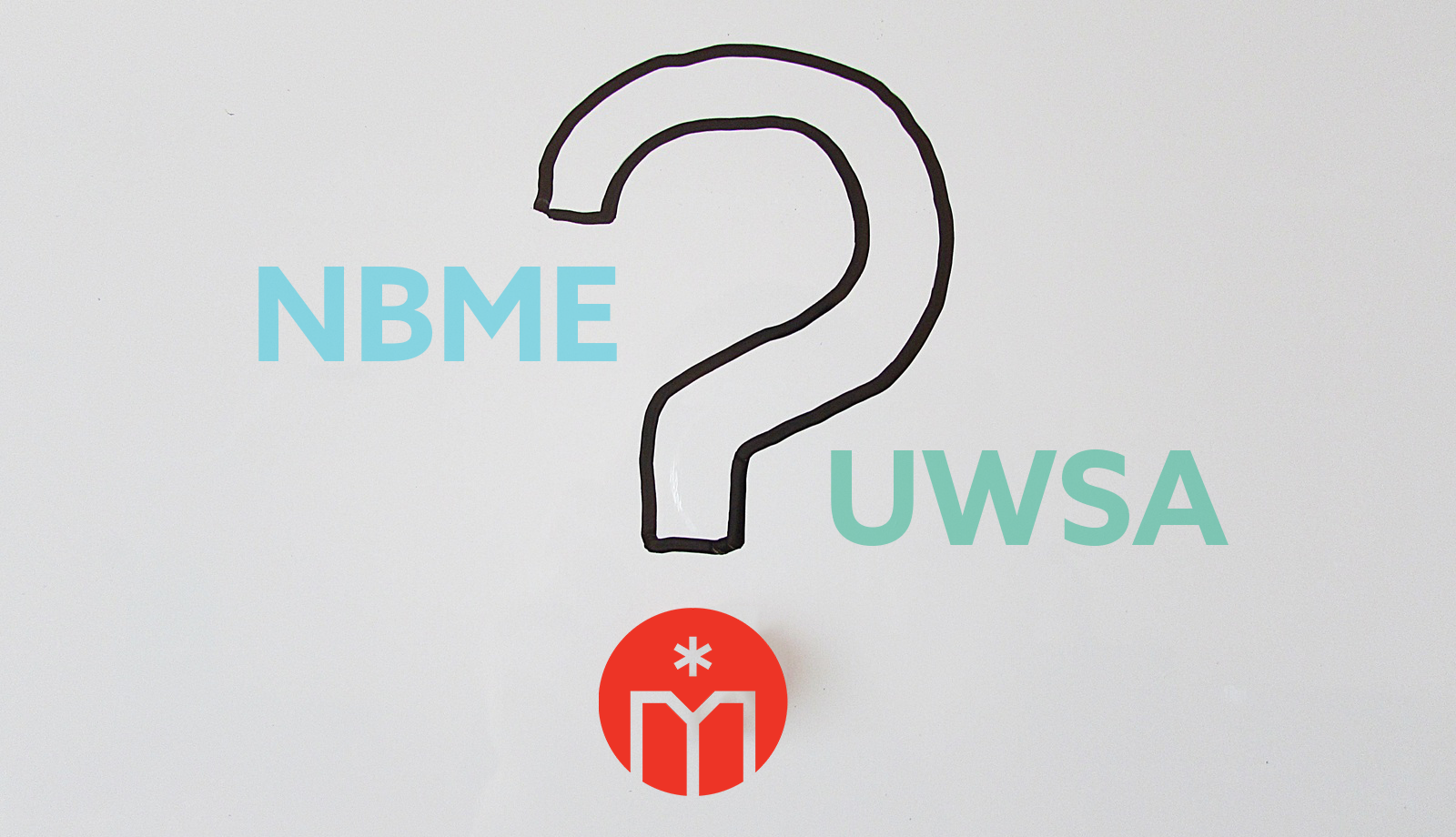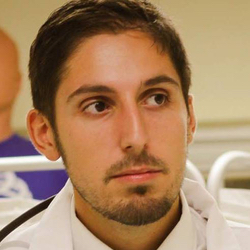[Erica Forrette and Annette Gawron, MD, MPH contributed to this post.]
Many students ask us, “How do I know if my study plan is setting me up for success on Step 1?” Taking self-assessments is an excellent way to gauge your progress during your study period. If you’re not sure where to start, self-assessments can help you pinpoint your weak areas. A self-assessment can also quell anxiety concerning the test’s format. Among all of the tools at your disposal, practice tests are the best resource for increasing your familiarity with the test’s structure, while also increasing your grasp of the test’s content.
Medical students have a wide range of self-assessments to choose from, including UWorld self-assessments, and tests from the NBME (the National Board of Medical Examiners). The official name of NBME tests are the CBSSAs (Comprehensive Basic Science Self-Assessments).
One of the most common questions we get is:
“What is the difference between the NBME Comprehensive Basic Science Self Assessments (often referred to as just NBMEs) and the UWorld Self Assessments (UWSAs)?”
For starters, the NBME and UWSA are both practice tests that students take to help them prepare for the USMLE Step 1 exam, to gauge their study progress, and to predict their final score.
There are six NBMEs that are available for purchase for $60 each (and in 2020 an additional five that are available for free). There are two UWSAs that are included in your UWorld subscription if you buy at least a 180 day subscription.
NBMEs consist of four sections of 50 questions while the UWSAs contain four sections of 40 questions. The actual USMLE Step 1 exam is made up of 7 blocks of a maximum of 40 questions per block.
NBME and UWSA: Varying Question Styles
Aside from the obvious differences mentioned above, the NBMEs and UWSAs vary in their question styles. NBME questions tend to be much shorter in length and more vague than the UWSAs.
The USMLE Step 1 exam tends to resemble NBME style questions more closely, but in my experience the UWSAs often better predict final exam scores than the NBMEs for many students.
Recommendation: start with NBMEs and save the two UWSA for the final few weeks of studying.
The NBME-style of questions can take a little bit of time getting used to for some students. For this reason, many students see bigger variations between their NBME scores on different NBME forms when compared to their UWSA scores.
The UWSAs consist of UWorld-style questions and are therefore more familiar to students. Of course, there are many factors that contribute to variations in scores (i.e. anxiety levels that day, whether the test taker is well rested or not, the physical setting of the practice test, where you are in your study period) that also contribute to these fluctuations.
Since neither one of these practice tests mimic the entire length of the Step 1 USMLE exam, some students choose to take 3 timed UWorld question blocks following a UWSA or NBME to better simulate the actual exam length. I generally recommend doing this once or twice towards the very end of your designated study period to practice the timing of your breaks. This way you can ensure that your breaks are scheduled out in a way that will work best for when you sit for the actual exam.
Our tutors at Med School Tutors recommend taking as many practice tests as possible including both UWSAs. When to take each practice test varies by tutor and individual, but ultimately the more practice tests you do, the more equipped you will be to tackle the USMLE Step 1 when the day comes.
How can adding self-assessments improve my study plan?
As Loma Linda medical student Michael Douglas points out, “Many of the questions are riddles. If you’re not prepared, you can spend half your time interpreting the question.” Understanding what the question is asking is half the battle. In addition, practice tests can help you increase your recall. When you recognize what the question is asking, you can get to the answer faster. Your experience of the test day will ultimately affect your score. It’s better to know in advance if you usually run low on time on practice tests. If you recognize the issue early, you can incorporate more practice with timing and pacing into your study plan to get ready for the actual test.
Many of the questions are riddles. If you’re not prepared, you can spend half your time interpreting the question.
Michael Douglas, Loma Linda School of Medicine
Cram Fighter study plans support Practice Test scheduling. Build your custom schedule today.
How representative are self-assessments of the actual Step 1?
Medical University of the Americas student Ronald Russo shared his experience using UWorld self-assessments with us. He said “The UWorld self-assessment questions were really close to the actual Step 1 questions.” “UWorld definitely has the best explanations of any question bank,” Ronald added. However, Ronald also told us that “when it came down to calculating your score, UWorld wasn’t as good as the NBME.”
The UWorld self-assessment questions were really close to the actual Step 1 questions.
Ronald Russo, Medical University of the Americas, USMLE Step 1 Score: 244
Michael Douglas of Linda Loma School of Medicine agreed. He said, “The test provided by the NBME is part of an old Step 1. I actually did an analysis of people who reported their scores and how they correlated with NBME tests. They were pretty dead accurate.”
When we asked Ronald about the accuracy of the questions on the NBME tests, he said, “The NBME tests were a really good predictor score-wise. The question itself on the CBSSA is a little shorter. The vignettes on the actual test are longer.” Still, Ronald said that he recommends using both UWorld and NBME self-assessments in your study plan. “I definitely think use both,” He said, “You get 400 new questions from UWorld, with explanations. Whereas, with NBMEs you don’t get explanations.”
When should I take self-assessments?
Thomas Mike of the University of Pittsburgh recommends taking at least three practice tests. “I took a CBSSA before I began my study plan to see where I was starting from.” A baseline score will give you a reference point to measure improvement. Thomas recommends taking another self-assessment halfway through your study plan and another when you’ve finished.
Be sure to reserve days in your study plan to devote exclusively to taking your practice tests. With Cram Fighter, you have the option to schedule special days for practice tests, where nothing else will be scheduled.
Don’t be discouraged if your practice scores are not ideal. “My CBSSA scores were nowhere near my goal. Thankfully, my scores on the UWorld self-assessments showed some serious improvement over time.” If you are satisfied with your final practice test score and you see an upward trend, don’t wait to take the actual exam.
My scores on the UWorld self-assessments showed some serious improvement over time.
Thomas Mike, University of Pittsburgh
On the other hand, Michael Douglas of Loma Linda School of Medicine says that he wishes he took more NBME tests. According to Michael, UWorld self-assessments tend be “a lot more mild.” Michael says the best self-exams to use for preparation were the NBME tests, because they are more representative of the actual test than any other practice test. Use your practice tests to answer key questions, while working through your study plan. Medical students agree that practice tests are ideal for measuring progress, familiarizing yourself with exam-style questions, and deciding where to focus.









